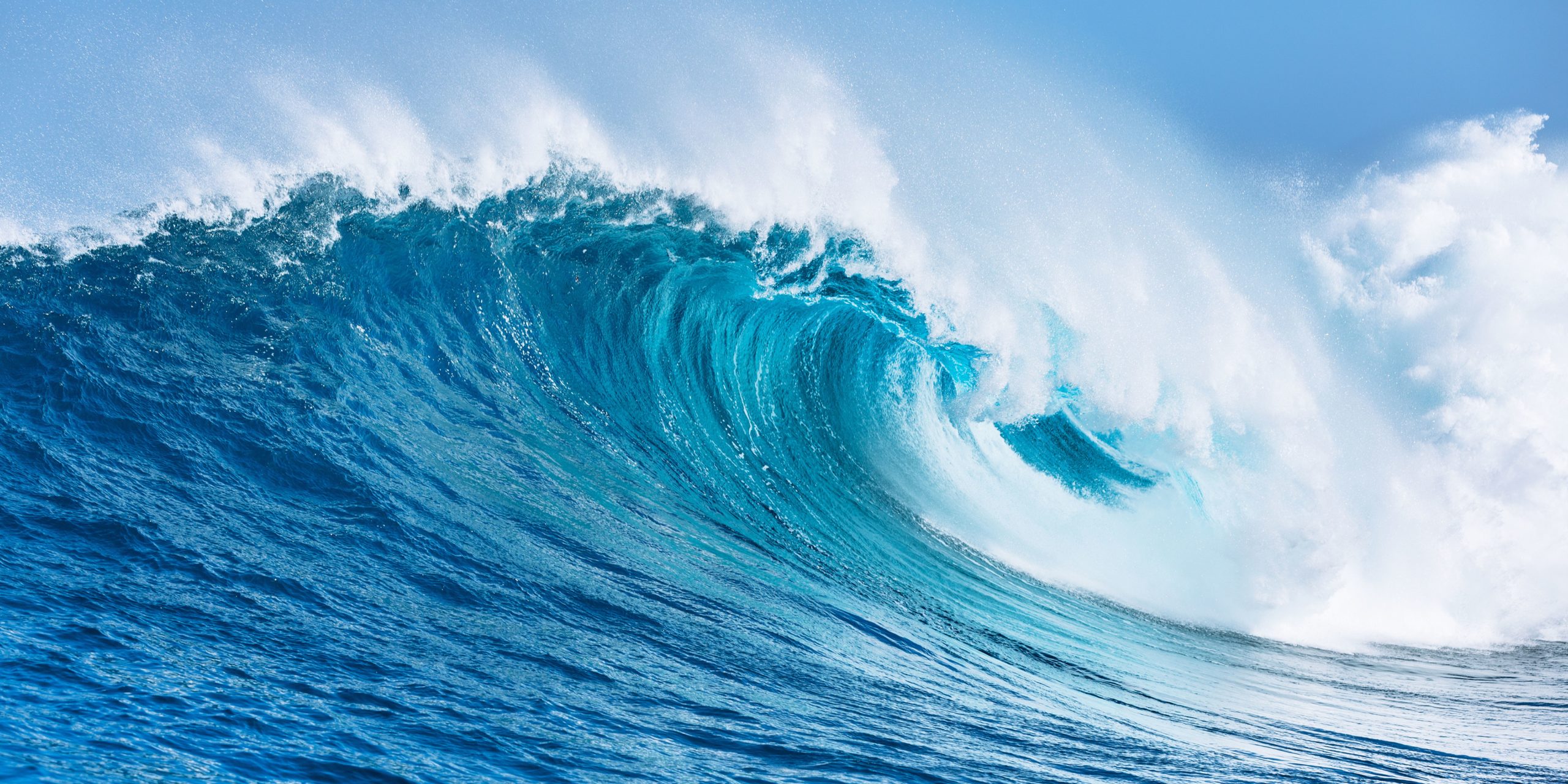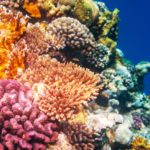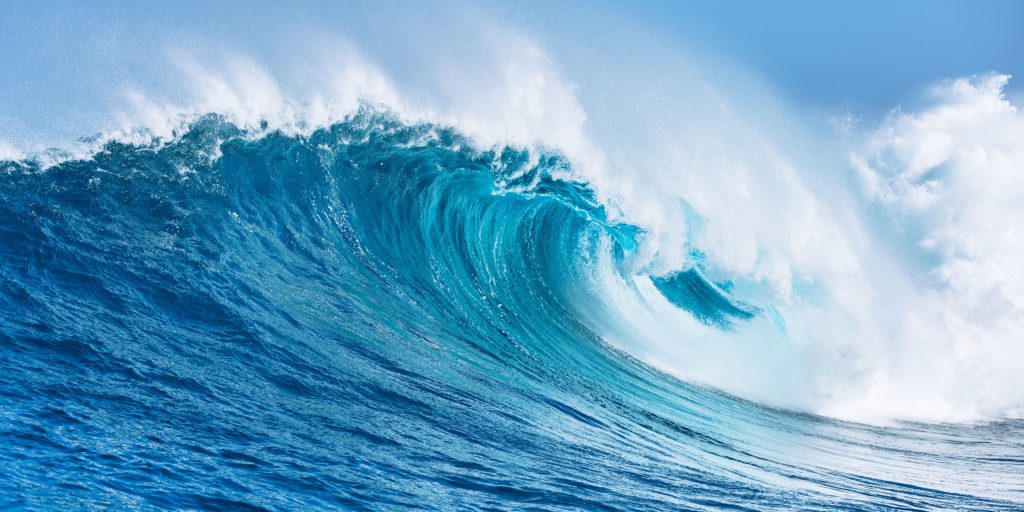Understanding the biological functions of the ocean
Covering more than 70% of the Earth’s surface, the oceans are both the cradle of life and a major player in the global climate, harbouring an incredible biodiversity essential to the ecological balance and survival of many species, including our own. Understanding their role and protecting them is a major challenge for our common future.
Exceptional biological diversity
The oceans cover around 71% of the Earth’s surface and are home to a biodiversity that remains largely unexplored. Only 0.001% of the oceans have been explored by humans, and less than 20% of marine species have been identified to date.
An incredible variety of life forms can be found in the oceans, from the single-celled micro-organisms of phytoplankton to large organisms such as whales, corals, fish, crustaceans and molluscs.
The ocean has several zones – coastal, pelagic, benthic, abyssal – offering unique and different conditions according to light, temperature and pressure, creating particular ecosystems with each inhabitant fulfilling essential functions to keep these ecosystems viable.
Here are a few of the major biological groups representative of this diversity:
– Phytoplankton, at the base of the food chain, producing half the world’s oxygen.
– Zooplankton, made up of tiny animals, larvae and eggs, essential for fish nutrition.
– Invertebrates, such as anemones, starfish, crabs and jellyfish, with their highly varied survival strategies.
– Fish, present in all oceanic zones, from the most coastal to the deepest.
– Marine mammals, such as dolphins and seals, which play an important role in population regulation.
– Deep-sea organisms live in extreme environments, opening up new avenues in biology and medicine.
This diversity is also evident in the wealth of ecological interactions, behaviors, life cycles and biological functions that these species fulfill in ecosystems.
The major biological functions of the ocean
The ocean plays a fundamental role in the planet’s major biological balances. It acts like a lung, producing most of the atmospheric oxygen we breathe thanks to the micro-algae of phytoplankton, which carry out photosynthesis, accounting for some 50 to 70% of global photosynthesis. They float on the surface of the oceans and form the basis of the entire marine food chain. By capturing CO2 (carbon dioxide), they help regulate the global climate. This carbon is partly stored in the depths of the ocean when organisms, whether microscopic or macroscopic, die and sink to the ocean floor. They act as carbon sinks, preventing carbon from being released into the atmosphere.
The marine food chain begins with phytoplankton, which transform solar energy into organic matter (sugar). This material is then consumed by zooplankton, followed by small fish, and so on up to the large predators (sharks, orcas, whales, etc.)
In this vast network, each organism has a function:
– Primary producers, mainly autotrophic protists such as diatoms, dinoflagellates or coccolithophores, make up phytoplankton. They are called autotrophs because they convert mineral matter (such as carbon dioxide and nutrients) into organic matter (sugar) by photosynthesis, using energy from the sun.
– Primary consumers (zooplankton, small crustaceans, heterotrophic protists) feed on phytoplankton.
– Predators (carnivorous fish, cetaceans, seabirds) regulate populations. Sharks, for example, are known as the “garbage of the oceans”. Among other things, they feed on weak or sick fish, thus preventing the spread of disease.
– Decomposers (bacteria, worms, burrowing crustaceans) recycle dead organic matter and return nutrients (nitrogen, phosphorus, iron, silicon) to the ecosystem, essential for phytoplankton growth.
If we disrupt this system – for example, through pollution or climate change – we risk not only the collapse of marine species, but also major climatic imbalances.
Marine ecosystems, pillars of life
Each marine ecosystem plays a specific and essential role in the overall functioning of the ocean. These environments are home to communities of organisms that coexist, interact and maintain biological equilibrium.
– Coral reefs, for example, despite a global ocean surface area of 0.1%, are home to around 25% of marine biodiversity. They are nurseries and shelters for thousands of species. They provide refuge, breeding grounds and food for thousands of species. Corals, which are animals, form structures thanks to their calcareous skeletons. Their survival depends on symbiotic algae: zooxanthellae, protists that live in their tissues.
– Mangroves, located by the sea, protect coasts from erosion and storms, filter water and serve as a “natural nursery” refuge for many juvenile marine and terrestrial species.
– Seagrass beds effectively capture carbon and are home to a wide variety of fish and invertebrates. They also provide food for turtles, fish and crustaceans.
– Abyssal zones or hydrothermal springs are the only areas on the planet where life is based on chemosynthesis. Shrimps, crabs, tubeworms and bacteria live around these volcanic vents, in a fascinating biological equilibrium.
These ecosystems are interconnected: what happens in coastal areas can affect the open sea, and vice versa. Their degradation weakens marine biodiversity as a whole.
Threats disrupting ocean biology
Marine ecosystems today are subject to a series of major threats, often linked to human activities, which are undermining biodiversity and compromising the proper functioning of the oceans.
Overfishing, pollution, microplastics, global warming, ocean acidification and invasive species are causing the collapse of certain populations, the disappearance of entire ecosystems, and an overall decline in biodiversity.
Major biological consequences:
– Coral bleaching and death.
– Reduction in the number of breeding fish.
– Disruption of migratory cycles.
– Appearance of invasive species.
– Bioaccumulation of toxins in the food chain.
Challenges and prospects
In the face of these threats, preserving the oceans is crucial to global health. This requires :
– Establishing effective marine protected areas.
– Developing sustainable fishing practices.
– Drastically reducing pollutant emissions and plastic waste.
– Scientific research to better understand ecosystems and their vulnerabilities.
– Raising awareness and involving local and global populations.
The oceans are the blue lung of our planet, and protecting them is essential to guarantee the sustainability of the ecosystem services on which all life on Earth depends.
Conclusion
The ocean is much more than a vast expanse of water: it’s an immense reservoir of life, a fundamental pillar in maintaining the world’s ecological and climatic balance. Its extraordinary biodiversity, complex biological cycles and multiple interactions support services essential to all life on Earth, from oxygen production and climate regulation to the provision of food resources.
Yet today, this fragile wealth is seriously threatened by human pressures: intensive overfishing, chemical and plastic pollution, climate change and biological invasions are jeopardising the health of marine ecosystems and their ability to regenerate.
Preserving the world’s oceans requires a global mobilisation, but also the daily actions of each and every one of us, because every action counts to protect this vital natural heritage. Together, we can ensure a more sustainable future for our blue planet.
By acting now, we can protect a unique natural heritage, a true blue lung for our planet, and guarantee a more balanced and sustainable future for us all.
Summary of key points
– The oceans cover 71% of the earth’s surface and are home to an immense marine biodiversity that is still largely unknown.
– Phytoplankton, autotrophic protists, produce 50-70% of the world’s oxygen and form the basis of marine food chains.
– The oceans play a crucial role in climate regulation, notably by capturing CO₂ and storing carbon in their depths.
– Marine life has adapted to extreme conditions, with varied biological strategies and behaviors (bioluminescence, camouflage, chemosynthesis).
– Various marine ecosystems (coral reefs, mangroves, seagrass beds, abysses) are essential to biodiversity and the proper functioning of the oceans.
– Major threats include overfishing, chemical pollution, microplastics, climate change and invasive species, which destabilize ecosystems.
– Preserving the oceans requires global action: protected areas, sustainable fishing, reducing pollutants, scientific research and raising awareness.
– Protecting the oceans is essential to maintaining the ecosystem services vital to the planet and guaranteeing a sustainable future.
Illustrative photo: @canva.com
Sources internet:
- Ocean service NOAA – Ocean oxygen
- Scripps – Phenomenal phytoplankton
- Biological pump
- Nature – Monitoring and modelling marine zooplankton in a changing climate
- Earth sky – How much do oceans add to worlds oxygen














